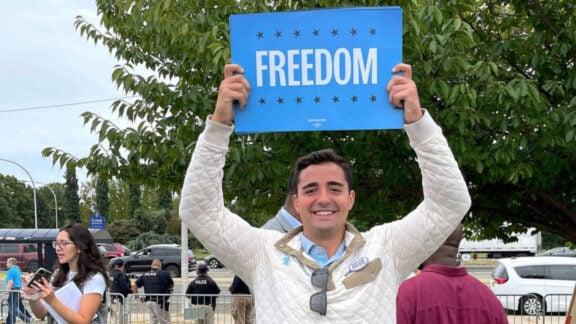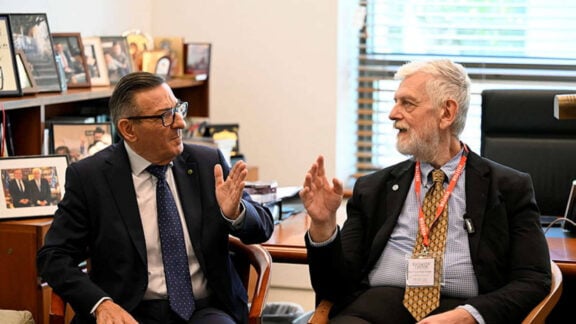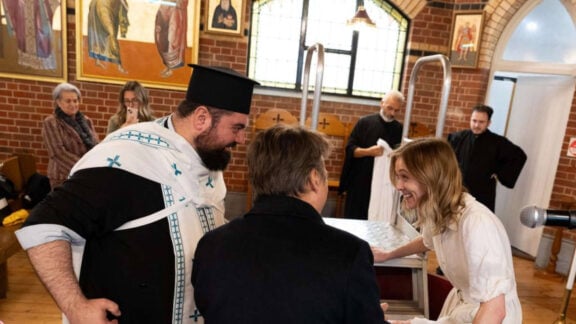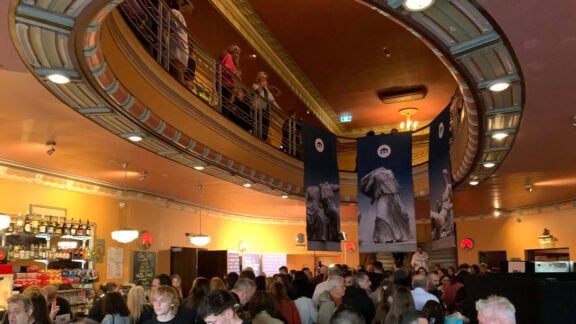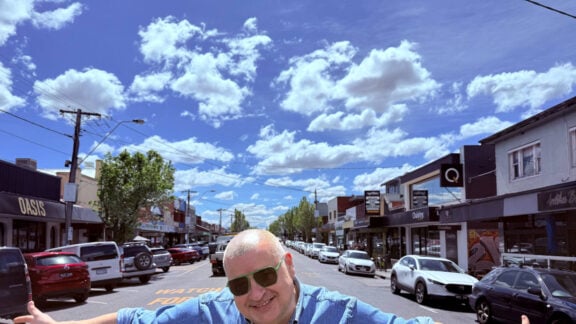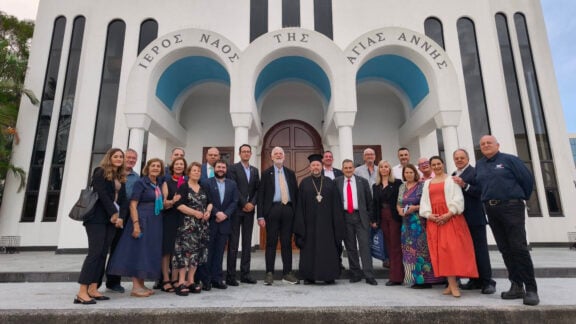Steven Karakitsos, president of the South Eastern Centre for Sustainability says the fight goes on to save a 120-year-old Moreton Bay fig tree under threat, despite the council making a decision last month not to come to its rescue.
Frankston Council had been asked to stump up the $750,000 minimum required to buy the two properties whose land includes the historic tree. With the properties’ foundations being eroded by the fig’s ancient roots, the owners of the townhouses – who support the tree remaining on the site – were keen to close a deal with the council.
Cr Glenn Aitken, who had tried to broker the deal, said the decision was “a sad day for Frankston,” and that Frankston’s environmental leadership and credibility would be judged on this decision. “It is a tree of great importance to our community, which was planted before Federation when Victoria was still a colony of Britain and it is still hale and hearty today with a long life span ahead of it,” he told the Frankston Standard Leader.
Frankston Mayor Cr Sandra Mayer said that local residents would be disappointed by the decision. “However, given our constrained financial position, council resolved not to spend ratepayers’ money on steps to protect the tree which would have included associated legal and property acquisition costs,” she said. The mayor added that the council understood the significance of the tree for the community and had “explored all available options to seek protection of the tree”.
In 2003 the council paid $120,000 to save the tree from being felled; that investment now appears irrelevant. Many local residents expressed their dissatisfaction with the decision and have threatened to take direct action to prevent its removal. Some have suggested keeping a 24-hour vigil. “Councillors overlooked the potential for a solution and their arguments were farcical,” was one observer’s opinion.
Steve Karakitsos told Neos Kosmos that the council’s decision showed “gob-smacking negligence on account of the measures that were implemented in 2003 to purchase the property and save it”. “It looks as if Frankston’s 2025 Vision – created through public consultation with its strong emphasis on protecting our green heritage is a mask – an irreparable facade full of structural cracks that means little if anything…” Karakitsos has vowed to carry on the fight.
The next step will be to lobby MPs to look at how legislation can play a role in the tree’s long-term survival and collect signatures for a petition through the communityrun.org website. “We’re bringing this to the State’s attention and pursuing a number of avenues that would goad the council into accepting responsibility in resolving the issue, he says. “If the tree could be saved through legislation, the council or other authorities would be responsible for the property owners to be recompensed for selling. There has to be some kind of compromise”.
Whilst the historical importance of the tree has been uppermost in deliberations over its future, Karakitsos believes its environmental significance has been overlooked by many. Flying foxes, barn, boobook and other owls, along with yellow-bellied sheath-tailed bats and a host of other creatures all rely on the ancient fig tree for food and refuge.

